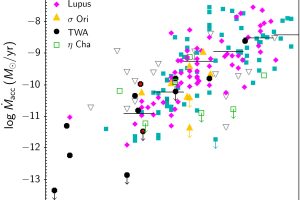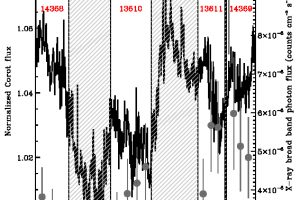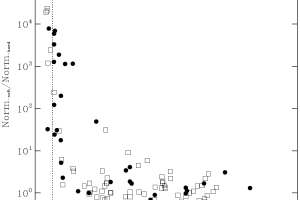Accretion and dispersion of protoplanetary disks. The study: “X-shooter spectroscopy of young stars with disks. The TW Hydrae association as a probe of the final stages of disk accretion” by L. Venuti (Eberhard Karls Universität/Cornell University/NASA) recently published by A&A

At a distance of about 160 light years, the stellar association TW Hydrae is a benchmark for the study of pre-main sequence stars and their protoplanetary disks. Pre-main sequence stars are a few million years old stars, still gravitationally contracting and not powered yet by the thermonuclear reactions. They are often surrounded by disks of dust and gas called “protoplanetary
» Read more


